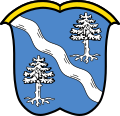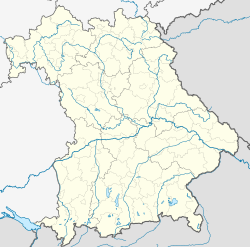Krailling | |
|---|---|
 Church of Saint Margaret | |
Location of Krailling within Starnberg district  | |
| Coordinates: 48°05′53″N11°24′26″E / 48.09806°N 11.40722°E | |
| Country | Germany |
| State | Bavaria |
| Admin. region | Oberbayern |
| District | Starnberg |
| Government | |
| • Mayor (2019–25) | Rudolph Haux [1] (FDP) |
| Area | |
• Total | 16.00 km2 (6.18 sq mi) |
| Elevation | 548 m (1,798 ft) |
| Population (2023-12-31) [2] | |
• Total | 7,895 |
| • Density | 490/km2 (1,300/sq mi) |
| Time zone | UTC+01:00 (CET) |
| • Summer (DST) | UTC+02:00 (CEST) |
| Postal codes | 82152 |
| Dialling codes | 089 |
| Vehicle registration | STA |
| Website | www.krailling.de |
Krailling is a municipality in the district of Starnberg in Bavaria, Germany.


